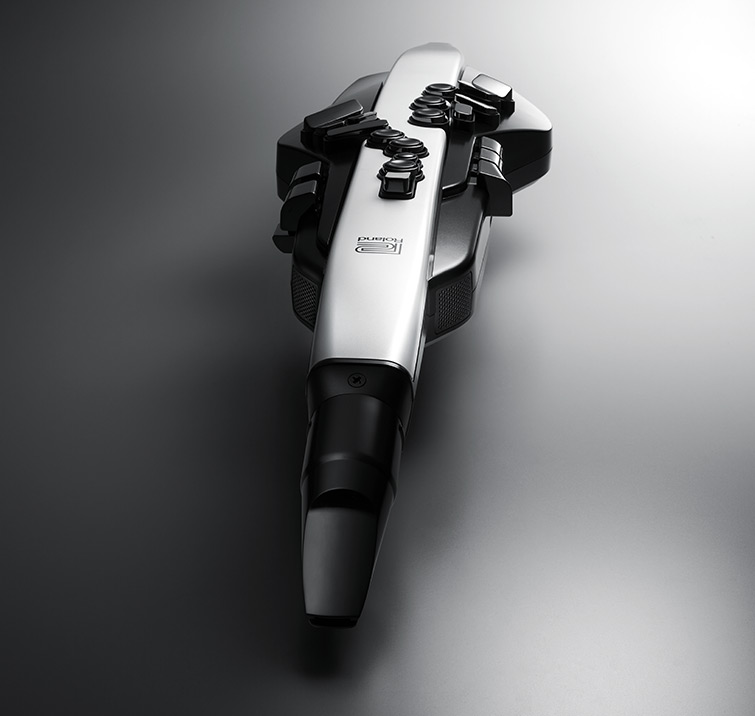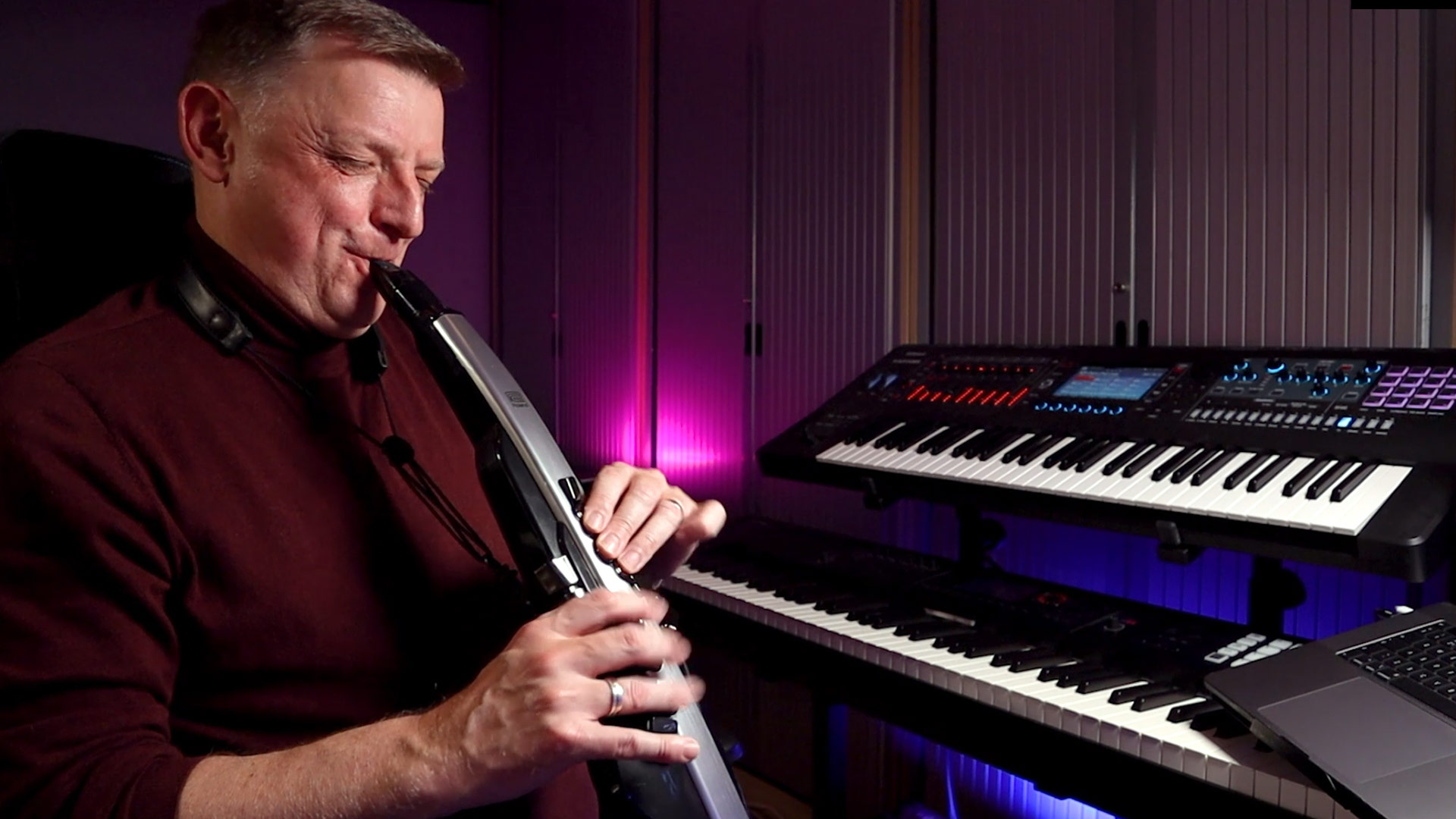The Roland Aerophone offers players many benefits across all skill levels. It is not only a dynamic instrument optimal for performance and composition, but it is also a powerful learning tool. With its flexible settings and user-friendly nature, the Aerophone offers players a variety of ways to focus on fundamental wind player skills such as tone and articulation. Players can freely practice without worrying about volume, tuning, or other distractions. Here’s why the Aerophone is the perfect choice for new wind players.
Transfer Your Skills
The Roland Aerophone has a mouthpiece designed to resemble the reed and mouthpiece combination you’d encounter on an acoustic instrument such as the saxophone or clarinet. This offers players familiarity and means that any time spent with the Aerophone directly transfers. Where and how you articulate, form your embouchure, and produce sound with the Aerophone carries over to other woodwind instruments.
Breath and Bite Control
Two sensors are built into the mouthpiece, allowing you to recreate breath and bite control like on an acoustic instrument. Learn to control dynamics, pitch bend, vibrato, and other vital techniques controlled by embouchure and breath control. With the Aerophone, you learn to direct your air in a controlled stream, strengthening your embouchure—an essential.

"Where and how you articulate, form your embouchure, and produce sound with the Aerophone carries over to other woodwind instruments."
Less Resistance
The Aerophone responds to breath—it is a wind instrument, after all. But learning to play continuously on a wind instrument can be dizzying. This is where the drone feature comes in handy. By activating this setting, you can blow into the Aerophone mouthpiece once to produce a continuous sound. With its hold function, you can practice your fingering without pausing to take a breath.
For those with breathing difficulties or still working on building diaphragm support, this feature and the fact that the Aerophone takes less air to play than an acoustic wind instrument makes it a good entry point.

Adjust Settings for Performance-ready Tone
Many say the saxophone is the easiest instrument to pick up but the hardest to sound good on. But while many feel the squeaks, honks, and wild pitch are a right of passage for wind players, it can be discouraging as you journey to find your instrument’s voice.
With the Aerophone, you can adjust the settings to control how much your developing embouchure affects what comes out of the instrument. The sensors in the mouthpiece can be as sensitive as you need. Turn the sensitivity down so you can focus on learning how to coordinate your fingers and start creating music. Or turn the sensitivity up to train your breath control and strengthen your embouchure.
"With the Aerophone, you can adjust the settings to control how much your developing embouchure affects what comes out of the instrument."
Technology has come a long way in the last several decades. With the Roland Aerophone, you’re giving yourself the best instrument available. Using an Aerophone makes it easy and fun to start playing. Plus, it’s exciting to use the different sounds, too. The Aerophone is perfect for any new wind player, whether you pick up a wind controller for fun, learning, or a little bit of both.
With the Aerophone, players can freely practice and perform without worrying about volume, tuning, or other distractions. Explore how this digital wind instrument can help you play anywhere, anytime.







